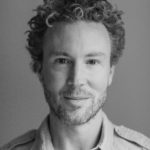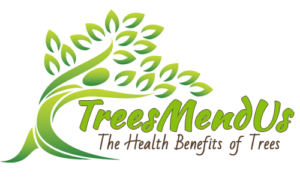
Interview Time Stamps:
5:00 – Radical hope and clear eyed awareness. Two degrees means awful things, but also opportunity to reconsider our destructive ways, and embrace our roles as guardians of nature…. to re- entangle with nature.
8:12 minute mark – New ways of looking and seeing – some ancient and some modern with huge datasets re future impacts. Biochemical research on trees, we have characterized so few.
9:15 see forest as a garden and laboratory, change in perspective, “timber is the least valuable thing in the forest.”
Travel writing, Adventures with Characters.
Seven Chapters, Seven Species, Seven Stops Around the World in the Boreal
10:15 Wales – The Yew Tree – Tree in Ben’s back yard. Simple questions: Why is that tree in that place?
How long has it been here?
Ice Age, reminders of the patterns vegetation on earth and time scale of 2000 or 8000 years. Long time scales.
13:43 Scotland – story here is deforestation. Treeless landscape. Aventure to find small patch of old pines.
15:34 Norway – Finmark, top of Europe. Different story of “afforestation.” Birch used to be in the valleys, now it is zooming up into the tundra. Lapland nomads way of life hunting reindeer disappearing as trees move in — taking over grassland, lichen, and trapping snow to produce soil.
18:21 Russia – immense forest, half of the boreal forest is in Siberia. Most northernly forest in the world. Larch is frozen 260 days a year. Prevents injury to itself in the freezing process by freezing solid like glass. Here trees are not moving at all. Temperatures moved from -60 to -40. But population of the forest is moving in – birds, rodents. Can see the complex shift in nature.
21:00 Alaska – Spruce trees are galloping north. Species that live off the trees, the beaver is “paving the way for trees.”
22.59 Beavers are accelerating the warming of the landscape by 60% of the existing surface change. NASA satellite researchers counting beaver ponds in aerial views.
24:56 Alaska: Book “Make Prayers to the Raven” , book is a testament to the Coyacon. Helped Ben to come to terms with a changing climate, helped him to see “not to despair, the answer is to look closer — that we need to be more finely attuned to our ecosystems — to be a part of it all — to pay attention. “
27:55 Greenland: here there is no source of seed. The irony is that once upon a time was covered in trees and why the Vikings called it Greenland. But the Vikings cut all the trees down, and since the Ice Age there have been no trees. By bringing seeds to Greenland, we are like Noah with his Arc, we have substantial influence on what happens. This could be a refuge for the Boreal forest – a cooler climate, if we can bend the climate crisis curve. 30:52 Diana Beresford-Kroeger is a foundational part of the book. I spent 3 days at her feet learning about that she has written and learned over her years. Diana send Ben to Poplar River, called Asatiwisipe Aki by the First Nation, their traditional land has been designated as a protected area with the support of the Manitoba government. It is one of the last remaining pristine river areas in the world, particularly in southern Canada. The river is very clean, with little or no man-made pollutants in the watershed. The Poplar River is designated as a UNESCO Heritage Site.
32:43 Churchill: Beluga Whales. This is cited in Diana’s work, that iron in decomposing leaves, gets to the phytoplankton of the krill that the whales eat. In a way Beluga Whales can taste the trees in the water.
Summary: 1) Must be clear eyed about the present – 2 degrees increase in temperature is a fact- accept that the status quo is not possible, that there will be awful changes and we need to act 2) opportunity to reconsider our destructive practices — opportunity to reintangle with nature – embrace our role as guardians, develop new ways of seeing the world. Future impact will involve ancient ways, and modern in big data sets, biochemical research on trees — we have characterized so few. We need to see our forests as gardens and laboratories, and change our perspective: timber is the least valuable thing in the forest.
Ben Rawlence The Treeline
Ben Rawlence City of Thorns
Ben Rawlence Radio Congo
Ben Rawlence on Twitter
Black Mountains College website
Black Mountains College on Twitter
Verla Fortier Optimize Your Heart Rate: Balance Your Mind and Body With Green Space
Verla Fortier Take Back Your Outside Mindset
Verla Fortier Take Back Your Outside Mindset Workbook

